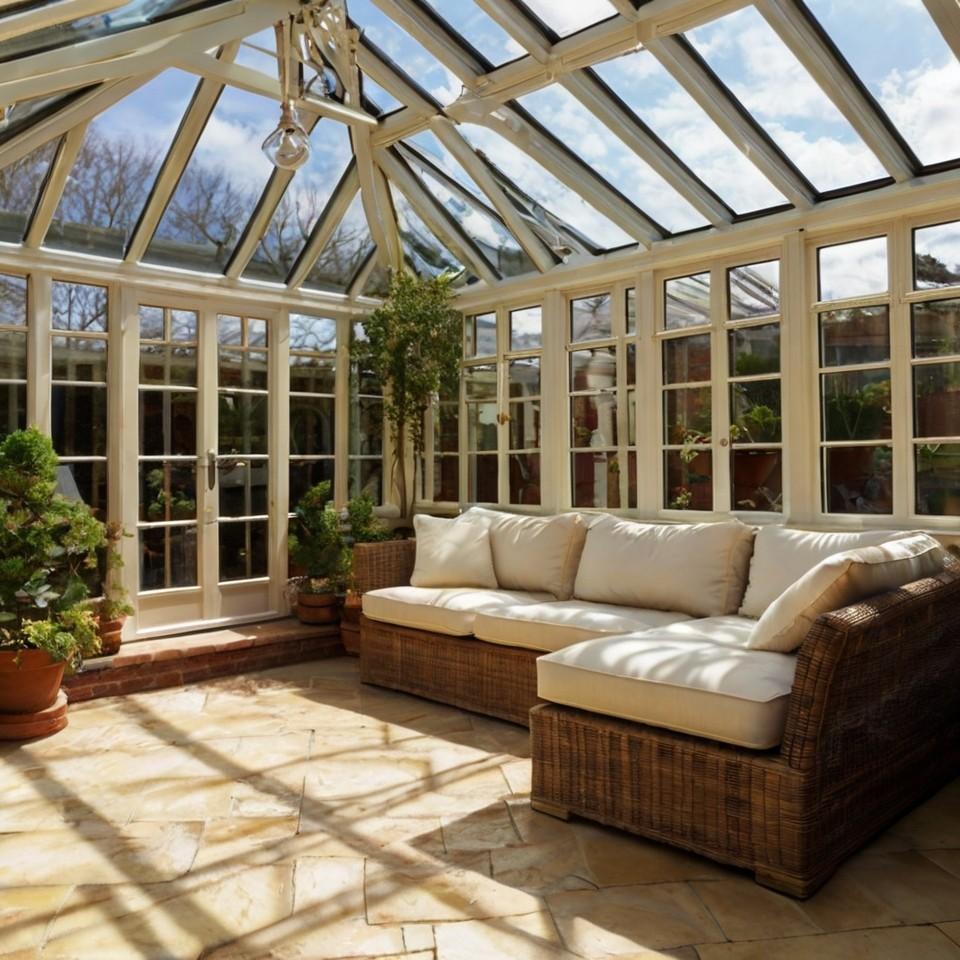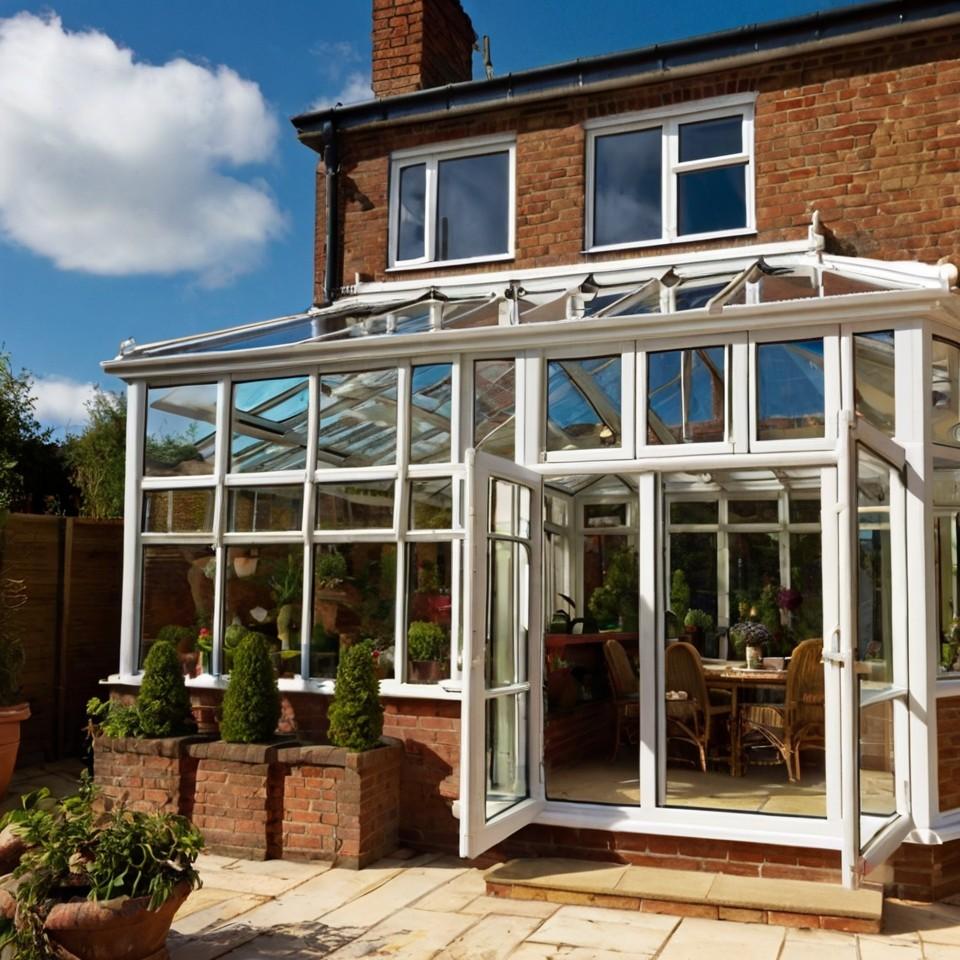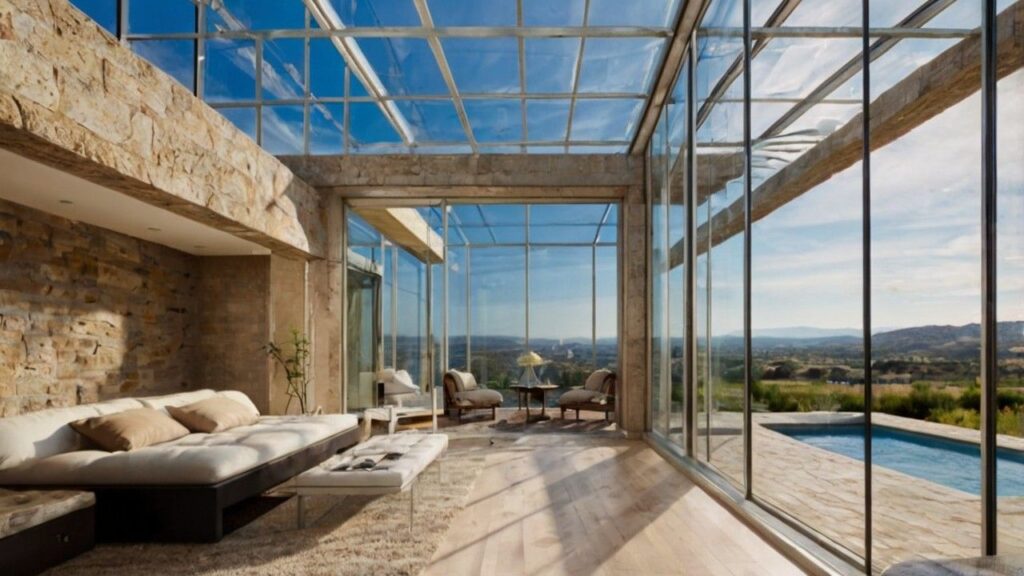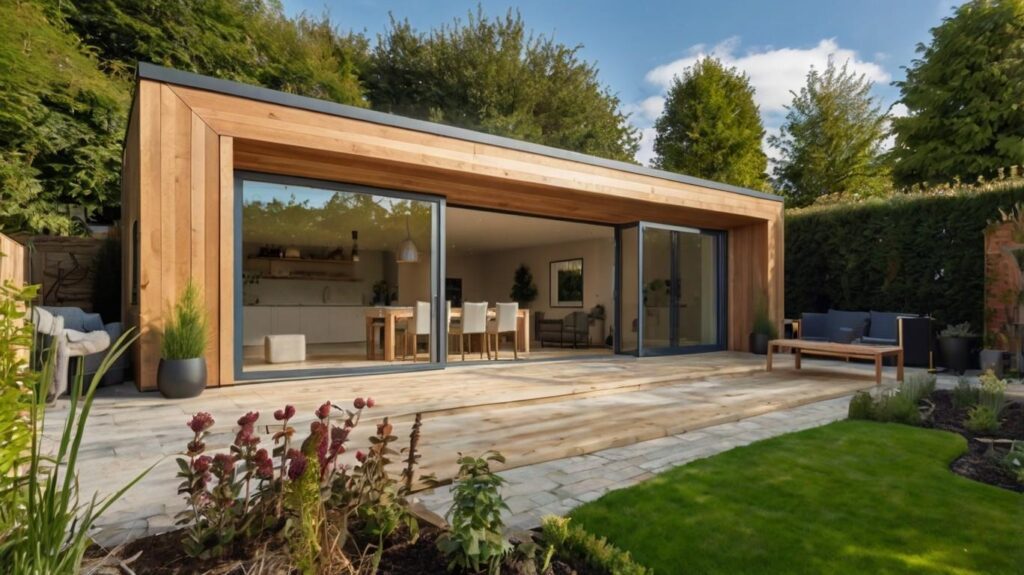Lean-to Conservatory: Design Ideas, Benefits, Costs & Planning Guide
Summary: A lean-to conservatory is a simple room that attaches to the side of your house. It has a single-sloped roof and lots of windows. These conservatories are popular because they’re cheaper than other types. They work well with most house styles and let in plenty of natural light. Most lean-to conservatories cost between £10,000 and £35,000.
Would you like to enjoy your garden view all year round? A lean-to conservatory might be perfect for you. It’s like adding a glass room to your house. You can use it as a reading space, dining room, or just somewhere to relax.
Why Should You Listen to Us?
Our UK-based team helped over 1M homeowners save up to 40% on home improvement quotes since 2006. By using our free no-obligation quote comparison service, you will receive the most competitive quotes from vetted and accredited local companies.
What Makes a Lean-to Conservatory Special?
A lean-to conservatory stands out for its straightforward, practical design. The single-sloped roof creates a clean look that works with any house style. These rooms cost less than fancier conservatory types while still giving you lots of extra space.
Basic Design
The design is very simple. One roof slopes down from your house wall. According to the Glass and Glazing Federation’s guidelines, this straightforward design makes lean-to conservatories one of the most energy-efficient choices. There are lots of windows on the sides. The shape is usually a basic rectangle. This simple design helps keep the cost down.
Main Benefits
A lean-to conservatory offers several key advantages for homeowners. These structures fit well in small spaces and cost less than other conservatory types. The design allows plenty of natural light to enter your home. Many homeowners appreciate how easy they are to keep clean. They blend well with any house style, from modern to traditional. You can use them in many different ways throughout the year.
Planning Your New Room
Getting a lean-to conservatory starts with measuring your available space. Your house height will affect how steep the roof can be. A good builder can help you plan the perfect size for your needs.
Size Options
You can choose different sizes to fit your space. Small ones are about 2 meters by 2 meters. Large ones can be 6 meters by 3 meters. The roof height can change to match your house.
Getting Permission
Most times, you won’t need special permission to build one. The Royal Institute of British Architects recommends checking your property’s permitted development rights first. There are some important rules to follow. Your conservatory cannot cover more than half your yard. It must not stick out too far from your house. The structure cannot be taller than 4 meters. Always check with your local council first to ensure compliance.
Thoroughly Vetted Professionals
Every supplier in our network goes through a strict vetting process, including credit checks and accreditation verification.
Materials and Design Choices
The materials you pick will affect how your conservatory looks and feels. Glass, plastic, and solid roofs each offer different benefits for light and warmth. The frame material changes both the look and the price of your new room.
Roof Types
Glass roofs let in the most light and keep heat in well. According to the Building Research Establishment, modern glass conservatory roofs can achieve U-values as low as 1.0 W/m²K. Some modern glass roofs can even clean themselves. This makes them a popular choice for many homeowners.
Plastic roofs cost less than glass options. They still work well for keeping your space comfortable. However, they aren’t as good at keeping heat in during winter months.
Solid roofs offer the best insulation for year-round use. They keep heat in better than other options. The trade-off is they let in less natural light than glass roofs.
Frame Choices
Plastic frames, also called uPVC, are the most common choice. Most people choose these because they don’t cost much. They keep heat in well and come in many colors. These frames need very little maintenance.
Metal frames made from aluminum give a modern look. They’re stronger than plastic frames. You can have bigger windows with metal frames. They cost more than plastic but last a very long time.
Wooden frames create a traditional appearance. They’re good for the environment and look natural. You need to take care of wooden frames regularly. They cost more at first but can last many years.
Cost Considerations
Most people spend between £10,000 and £35,000 on their lean-to conservatory. The final price depends on size, materials, and extra features you choose. Bigger spaces and better materials cost more, but they often last longer.
Basic Prices
The cost of a lean-to conservatory varies based on its size. A small room of 2x2m typically costs between £10,000 and £15,000. Medium-sized spaces of 3x3m range from £15,000 to £25,000. Larger rooms of 4x3m or more can cost between £25,000 and £35,000.
Price Factors
Several things affect the final price of your conservatory. The materials you pick make a big difference in cost. The size of your chosen design impacts the price. Your yard might need work before building can start. The type of glass you choose changes the cost. Extra features like heating or special lighting add to the price.
Accredited Professionals, thoroughly vetted through reference and credit checks. Registered with self-certification schemes, guaranteeing high standards of workmanship.
Practical Matters
Your conservatory needs to stay comfortable all year round. Good insulation and proper ventilation help control the temperature. Regular cleaning and basic maintenance keep everything working well.
Energy Saving
New lean-to conservatories can stay comfortable all year round. The Energy Saving Trust notes that proper glazing and insulation can reduce heat loss by up to 50%. Double or triple windows help keep the right temperature. Special heat-saving glass makes a big difference. Good frame insulation stops heat from escaping. Floor heating can make the room cozy in winter.
Basic Care
These rooms don’t need much work to stay nice. Clean the windows every few weeks. Look for leaks when seasons change. Wipe down the frames twice each year. Keep door hinges working well with regular oiling. Check seals around windows and doors yearly.
Room Temperature
You can control the temperature in several ways. Install fans to keep cool in summer months. Get windows that open easily for fresh air. Use special blinds to block strong sunlight. Add heating options for cold winter days.
Making Your Space Beautiful
Your lean-to conservatory should match your style and needs. Good furniture and lighting make the space more useful. Adding plants and proper storage helps create a room you’ll love using.
Design Ideas
Your conservatory should feel welcoming and comfortable. Choose furniture that can handle lots of sunlight. Add some indoor plants to bring nature inside. Install good lighting for evening use. Pick colors that work well with your house. Include storage to keep the space tidy.
Room Uses
A lean-to conservatory works well for many purposes. Turn it into a dining space for family meals. Create a quiet office away from noise. Make a cozy reading room for relaxing. Grow plants in a bright garden room. Give kids a warm play area. Add an extra living room for family time.



Common Questions
New homeowners often ask about building time and warranties. Most projects take two to three weeks to finish. Good builders offer at least ten years of guarantee on their work.
Building Timeline
Most builders can finish a lean-to conservatory in two to three weeks. The exact time depends on the weather and design complexity. Your builder should give you a clear schedule before work starts.
Important Guarantees
Get proper protection for your investment. Ask for a ten-year guarantee on the structure. Make sure you have insurance backup for the work. Request proper certificates when the job is done. Get clear instructions about caring for your new room.
Final Thoughts: A lean-to conservatory gives you extra space without spending too much money. It works well all year round and makes your house worth more. Choose good builders and plan your design carefully. Your new room will bring joy for many years to come.
This simple addition can change how you use your home. It brings natural light into your house. The extra space gives you room to grow. Good planning helps create a room you’ll love using every day.
Your lean-to conservatory becomes part of your daily life. It connects your indoor space with your garden view. The simple design means less worry about upkeep. You get a bright, useful room that works in every season.
Do I need planning permission for a lean-to conservatory?
Usually not. Most lean-to conservatories fall under permitted development. But you’ll need permission if you live in a listed building or conservation area. Always check with local authorities first.
How long does a lean-to conservatory last?
A well-built lean-to conservatory typically lasts 20-25 years. With proper maintenance and quality materials, some can last over 30 years. Regular upkeep helps extend its lifespan significantly.
Can I use my lean-to conservatory all year round?
Yes. Modern lean-to conservatories have good insulation and temperature control features. Adding proper heating and cooling systems makes the space comfortable throughout all seasons.
How long does it take to build a lean-to conservatory?
The average build time is 2-3 weeks. This includes setting the foundation, installing frames, and adding finishing touches. Weather conditions might affect the construction timeline.
Is a lean-to conservatory cheaper than other types?
Yes. Lean-to conservatories are usually the most affordable type. Their simple design and straightforward construction make them cost less than Victorian or Edwardian styles.
Will a lean-to conservatory add value to my house?
The smallest practical size is 2×2 meters. This gives enough space for basic furniture and movement. Consider your intended use when choosing the size.
Can I put a kitchen in my lean-to conservatory?
Yes, but you’ll need proper ventilation and additional planning permission. Consider extra costs for plumbing, electrical work, and specific building regulations for kitchens.
How do I stop my lean-to conservatory from getting too hot?
Use solar-control glass, roof vents, and good blinds. Adding a ceiling fan helps air circulation. Modern glass options reduce heat gain significantly.
What foundation does a lean-to conservatory need?
It needs a solid concrete foundation at least one meter deep. The exact depth depends on your soil type and local building regulations.
What’s the minimum size for a lean-to conservatory?
The smallest practical size is 2×2 meters. This gives enough space for basic furniture and movement. Consider your intended use when choosing the size.
UK-Based Support Team
Our knowledgeable, UK-based support team is familiar with local markets, regulations, and trends, so you’ll always get relevant and current advice.
Simply fill in your details, and Receive competitive quotes from accredited companies tailored to your project!
Our team brings almost two decades of expertise in the UK home improvements sector, giving you unique insights into its challenges and possibilities. Reaching out to us means tapping into a wealth of experience from home improvements experts who know the British market inside out.
We offer unparalleled market insights, a network of skilled professionals vetted, accredited and reference – credit checked who can handle projects of all sizes. Our knowledgeable UK-based team will ensure a smooth, informed experience from start to finish.
All our suppliers are members of one or more consumer protection groups below.



















